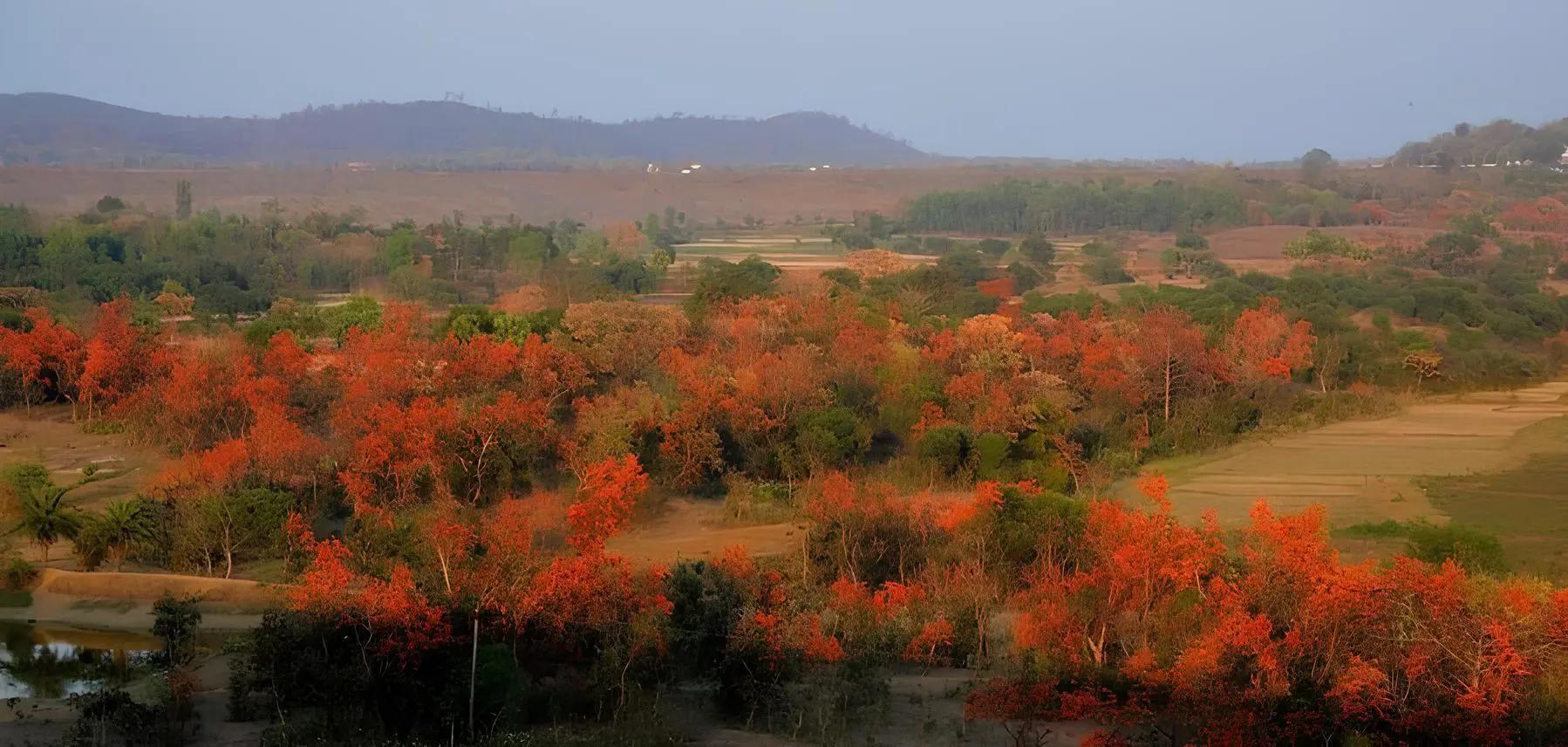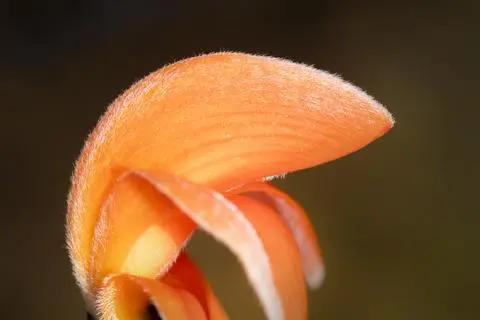
Indian mythology says that the god of fire, Agni, was transmuted by Goddess Parvati, the graceful yet powerful consort of Lord Shiva, into the kesuda tree. As spring descends over the lands, the Agni in kesuda seems to burst forth as the flaming-orange coloured flowers from the nearly leafless branches of these small-sized, deciduous trees. Such is the strikingly surreal sight presented by these flowers that they have earned the famous epithet - ‘flame of the forest’.
It is a sheer delight to behold the enchanting flame of the forest in full bloom from a distance. One gets a visual feel of the memorable scene from the epic Mahabharata where Agni consumes the entire Khandava forest under the watchful gaze of the supreme warrior, Arjuna.
But then, even up close, the flower is a marvel. Possessing a keel which looks like the daintily curved beak of a parrot (hence its name - kimshuka), the asymmetrical flower actually has a single line of symmetry. The nobel laureate, Acharya Rabindranath Tagore, composed paeans praising the beauty of ‘palash’, the kesuda’s cousin which abound at his Shantiniketan ashram. Saint Jayadeva, in his immortal work - the Geeta Govinda, compares the flower to the nails of Kamadeva (cupid) with which he wounds the hearts of lovers! Well, everyone has his/her own flame, but the kesuda is the forest’s flame!


Kesuda - a tree beyond compare
India is home to more than 19500 languages and dialects and it should not be surprising that the kesuda is known by several other names - palash, brahmavriksha, modugu, muthuga, polax, parasu, muriku, shamata, khakda and kimshuka. Scientifically, the flame of the forest, which flourishes in the tropical and subtropical parts of the world, is called Butea monosperma.
Not every tree gets so many unique local names. The many local names that the kesuda or the flame of the forest has is an indication of its immense uses and many benefits.
The bark of the tree is used to treat cuts and wounds. Its gum, Bengal Kino, is used for the treatment of diarrhoea and dysentery. The flowers are rich in sulphur and used in the treatment of skin ulcers and diseases. The kesuda seeds have anthelmintic properties and when mixed with lemon juice provide relief from eczema and ringworm.They are also used in the treatment of piles and eye disorders like cataracts.
It was the flame of the forest that yielded India’s first organic dye, created from the sun-dried flowers. This natural dye is also used during the Indian springtime festival of colors. In that sense, the kesuda’s saffron is indeed the first colour of Holi! The kesuda leaves also are stitched together with tiny sticks to create eco-friendly plates, bowls and cutlery.
Celebrating this marvel of nature which has a deep connection with India of the Vedic times, Aranyani proudly adopted the kesuda as the motif for its signature collection.
